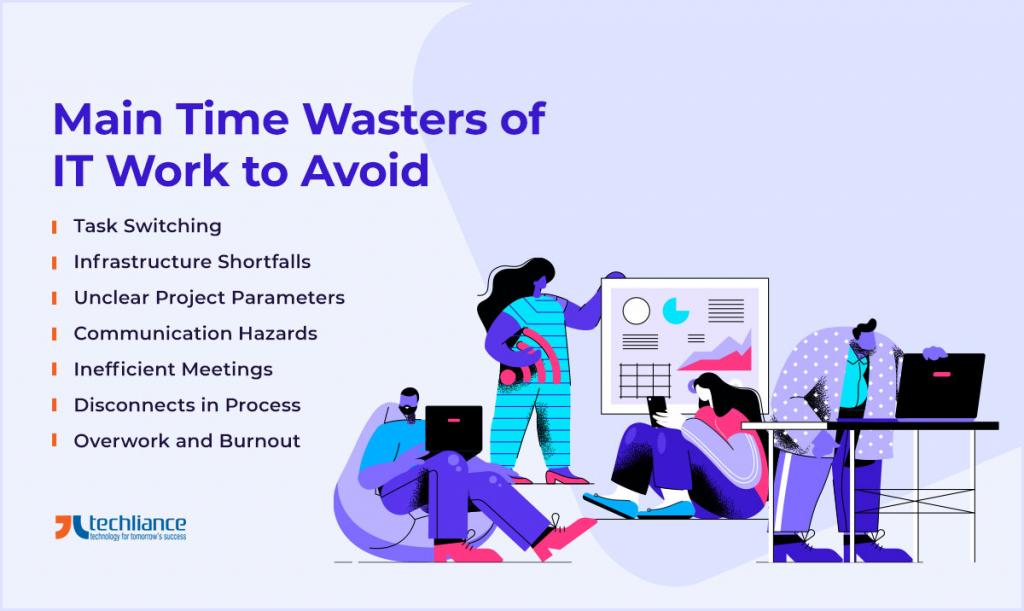Working in IT is complicated enough on the best days during 2020. At one time, you’re likely installing, maintaining, or updating hardware and software. Then you are monitoring security on any number of servers and networks. After that you are fixing bugs and code glitches. You are also troubleshooting for everyone who puts in a request. There are certain time wasters of IT work, which can disrupt your daily progress.
Now, add a pandemic like Coronavirus and resulting quarantine measures to your duties.
Suddenly a huge swath of your company is working remotely.
Therefore, this adds a whole new level of connectivity and communications to your to-do list.
It might have felt suddenly like your workload doubled while your day was cut in half.
Especially if you’re also sharing your home with family, kids, roommates, or even demanding pets.
So, how do you stay focused and maintain your workflow amid all these distractions?
Maintaining a normal workday against the backdrop of global worry and uncertainty isn’t easy.
Moreover, many of the obstacles in your path are not limited to Information Technology Services during 2020.
The good news is, there are ways to help you minimize the interruptions and distractions.
Hence, take advantage of productivity apps and collaboration tools, to work from home more proactively.

Main Time Wasters of IT Work to Avoid
The following are the biggest time wasters of IT work, that undermine productivity in 2020.
- Task Switching
- Infrastructure Shortfalls
- Unclear Project Parameters
- Communication Hazards
- Inefficient Meetings
- Disconnects in Process
- Overwork and Burnout
Now, let’s explore the non-productive time wasters of IT work in depth.
Task Switching
Research says it takes up to 23 minutes for human brain to fully resume task from which it is interrupted.
Now, get those 23 minutes and add the mechanical startup and shutdown time necessitated for many IT tasks.
So, this interrupts your entire workday.
Everyone juggles priorities on the job, but IT covers so many detail-heavy sectors.
Sometimes the work might seem like it consists of nothing but switching between tasks.
Thoughtful project planning, equitable task delegation, and a conscious allocation of resources can head off a lot of switching time.
Consequently, this can help you end the day with less exhaustion.
Infrastructure Shortfalls
No matter what kind of work you do, you need the right space and equipment.
Running an app-development empire from your couch is a familiar story.
But everyone eventually needs to upgrade to a designated office.
Particularly when you need more space for extra hard drives, monitors, or other peripheral equipment.
So, begin by clearing out some functional workspace.
If your living space is cramped, you need to do some intense uncluttering and put some things in storage.
Similarly consider the systems — electrical, HVAC, and plumbing — that stabilize your work-from-home setup.
If you lose electricity, you can lose everything (once your devices lose their charge, that is).
Home warranty plan covering cost of major repairs to built-in systems and major appliances, can keep you working nonstop.
Unclear Project Parameters
If projects aren’t clearly defined from beginning — in terms of goals, scope, tech detail, input from teams, and user feedback.
Then several costly rounds of corrective development are likely to squander time and enthusiasm.
That too on both fronts, i.e., inside and outside the company.
Try to consider a project from a “big picture” perspective from the outset.
Envision all ways that personnel, resources, market forces, security, and other considerations can interact to serve — or obstruct — your goals.

Communication Hazards
Keep in mind the email chains with no clear purpose, constantly clanging notifications, ongoing pointless chat threads.
All these familiar workplace phenomena consume time and energy that you don’t have to spare.
If your company has employee communication guidelines, try heading off these time-spoilers, by reminding offenders where to find them.
If these policies don’t exist yet, discuss establishing them with your supervisor or an HR representative.
So, everyone can keep their communications attentive and productive.
Inefficient Meetings
It is 2020, and nobody works in a vacuum.
Collaboration and discussion between departments, teams, and key players are imperative for successful projects.
Accordingly, that’s why we have meetings in the first place.
But too often, what should be goal-oriented production meetings can derail into rambling rumination, off-topic brainstorming, or obsessive nit-picking.
This is why meetings are notorious for wasting staff time and energy.
Whether it is in-person or Zoom-supported, it helps to start a meeting with an agenda of discussion topics.
Subsequently, you can end it with action items assigned to each attendee of the meeting.
Identifying specific goals and problems to solve beforehand, can keep a meeting short and on target.
Outcome is that, it makes everyone leave with their tasks clearly in mind.
Disconnects in Process
Whether it is software development, testing, deployment, integration, quality assurance, or beyond.
When there’s a gridlock in software project’s flow, often reason is incompatibility of infrastructure or process that causes the blockage.
Inconsistencies in environment configurations, database objects, workspace parameters, or machine specifications can waste precious time.
Consider automating processes with IDEs or utilizing configuration management tools to standardize environments for smoother changes and deployments amid 2024.
Overwork and Burnout
At the present time, no industry is immune to burnout.
For many employees who continue to do remote work during the pandemic, it has only become worse.
Recent survey reveals since COVID-19 lockdown and resulting economic crisis, U.S. workers have added average three hours to each workday.
Within the IT industry, superhuman workdays are practically always the standard.
In 2019, workers in IT were self-reporting burnout symptoms at a rate of 60% industrywide, before the pandemic hit.
During 2020, things have gotten worse since the lockdown began.
Across the board, workers are identifying the main culprit as a lack of separation between “work life” and “home life”.
Meanwhile as the setting for both is not likely to change anytime soon.
So, it is important to establish hard boundaries between working and non-working hours.
Draw up a schedule, with input from your team leader and company management, if necessary.
Then, share it with co-workers and housemates.
If required, then also set alarms.
You need to stick to those boundaries.

Conclusion
Once you log out for the day, get outside and shift your attention to something entirely different.
Consider pursuing a skill you have always wanted to master, like skateboarding or driving a stick shift.
A moderately difficult manual task can engage your body and brain in a completely different way.
This enables you to regenerate until the next workday.
IT is a time-intensive field whose conditions have only gotten more demanding under the current quarantine.
Demands of time, space, and attention can consume your workday.
But for all such problem, there are solutions.
Take proactive steps to identify daily time wasters of IT work soon.
Then, apply their remedies in timely manner.
As a result, take back your workday and keep productivity high.
Do you want specialized IT Services within low turnaround time?
Partner with Techliance and have your IT work with no time wasters.




